特惠-26考研冲刺
特惠-27考研课
双证-在职硕士
免联考-同等学力
26考研-肖八笔记
26考研-时政刷题
26考研-作文押题
26考研-全套真题
26考研-提前估分
保研-路线图
27考研-智能择校
27考研-英语测评
27考研-新大纲对比
热门-计算机择校
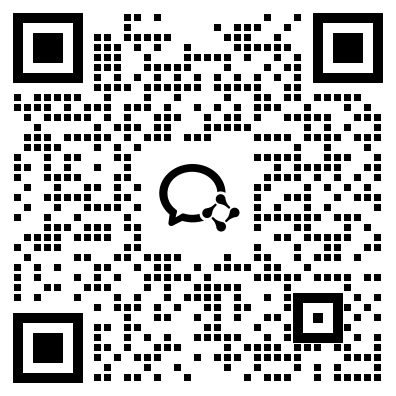
扫码加入训练营
牢记核心词
学习得礼盒
Part B
Directions:
The followingparagraphs are given in a wrong order. For Questions 41-45, you are required toreorganize these paragraphs into a coherent text by choosing from the list A-Gand filling them into the numbered boxes. Paragraphs A and E have been correctlyplaced Mark your answers on the ANSWER SHEET (10 points)
[A] Somearchaeological sites have always been easily observable—for example, theParthenon in Athens, Greece, the pyramids of Giza in Egypt; and the megalithsof Stonehenge in southern England. But these sites are exceptions to the norm.Most archaeological sites have been located by means of careful searching,while many others have been discovered by accident. Olduvai Gorge, an earlyhominid site in Tanzania, was found by a butterfly hunter who literally fellinto its deep valley in 1911. Thousands of Aztec artifacts came to light duringthe digging of the Mexico City subway in the 1970s.
[B]In another case,American archaeologists Rene Million and George Cowgill spent yearssystematically mapping the entire city of Teotihuacan in the Valley of Mexiconear what is now Mexico City. At its peak around AD 600, this city was one ofthe largest human settlements in the world. The researchers mapped not only thecity’s vast and ornate ceremonial areas, but also hundreds of simpler apartmentcomplexes where common people lived.
[C] How doarchaeologists know where to find what they are looking for when there isnothing visible on the surface of the ground? Typically, they survey and sample(make test excavations on) large areas of terrain to determine where excavationwill yield useful information. Surveys and test samples have also becomeimportant for understanding the larger landscapes that contain archaeologicalsites.
[D] Surveys can covera single large settlement or entire landscapes. In one case, many researchersworking around the ancient Maya city of Copan, Honduras, have located hundredsof small rural villages and individual dwellings by using aerial photographsand by making surveys on foot. The resulting settlement maps show how thedistribution and density of the rural population around the city changeddramatically between AD 500 and 850, when Copan collapsed.
[E] To find theirsites, archaeologists today rely heavily on systematic survey methods and avariety of high-technology tools and techniques. Airborne technologies, such asdifferent types of radar and photographic equipment carried by airplanes orspacecraft, allow archaeologists to learn about what lies beneath the groundwithout digging. Aerial surveys locate general areas of interest or largerburied features, such as ancient buildings or fields.
[F] Mostarchaeological sites, however, are discovered by archaeologists who have setout to look for them. Such searches can take years. British archaeologistHoward Carter knew that the tomb of the Egyptian pharaoh Tutankhamun existedfrom information found in other sites. Carter sifted through rubble in theValley of the Kings for seven years before he located the tomb in 1922. In thelate 1800s British archaeologist Sir Arthur Evan combed antique dealers’ storesin Athens, Greece. He was searching for tiny engraved seals attributed to theancient Mycenaean culture that dominated Greece from the 1400s to 1200s BC.Evans’s interpretations of these engravings eventually led him to find theMinoan palace at Knossos (Knossós) on the island of Crete, in 1900.
[G] Ground surveysallow archaeologists to pinpoint the places where digs will be successful. Mostground surveys involve a lot of walking, looking for surface clues such assmall fragments of pottery. They often include a certain amount of digging totest for buried materials at selected points across a landscape. Archaeologistsalso may locate buried remains by using such technologies as ground radar,magnetic-field recording, and metal detectors. Archaeologists commonly usecomputers to map sites and the landscapes around sites. Two andthree-dimensional maps are helpful tools in planning excavations, illustratinghow sites look, and presenting the results of archaeological research.
41.C → A →42.F → E →43.G→ 44.D →45.B
【英语一二真题】资料这里有↑↑↑
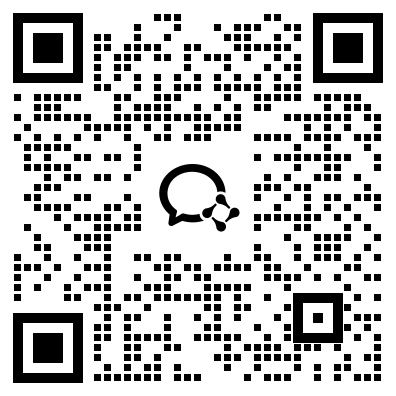
 资料下载
资料下载
2014年-2025年考研历年真题汇总
发布时间:2024-04-25扫码添加【考研班主任】
即可领取资料包
考研大纲PDF电子版下载-历年(附解析)
发布时间:2024-04-25扫码添加【考研班主任】
即可领取资料包
2026年考研政数英备考资料zip压缩包
发布时间:2024-04-25扫码添加【考研班主任】
即可领取资料包
考研英语大纲词汇5500打印版(基础必备)
发布时间:2024-04-25扫码添加【考研班主任】
即可领取资料包
新东方在线考试模拟题【12套】
发布时间:2024-04-25扫码添加【考研班主任】
即可领取资料包
2026年考研专业课知识点总结
发布时间:2024-04-25扫码添加【考研班主任】
即可领取资料包
新东方考研资料下载地址
发布时间:2023-05-17新东方在线考研资料合集
下载方式:微信扫码,获取网盘链接

目录:
1.2013-2023年近10年政数英真题及解析PDF版(新东方)
2.2013-2023年专业课考试历年真题及解析PDF版
3.24考研复习备考资料大合集:大纲+备考资料+词汇书+考前押题+自命题
资料介绍:
1.2013-2023年近10年政数英真题及解析PDF版(新东方)
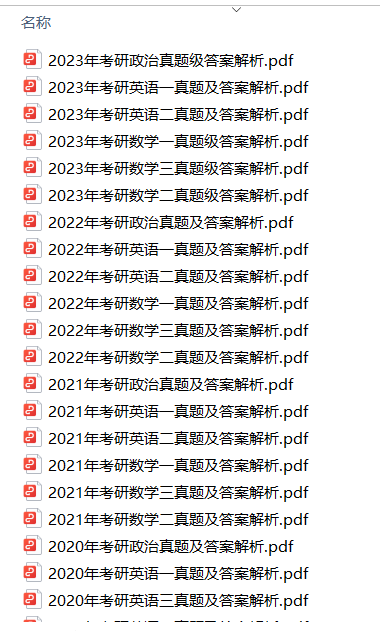 、
、
2.2013-2023年专业课考试历年真题及解析PDF版

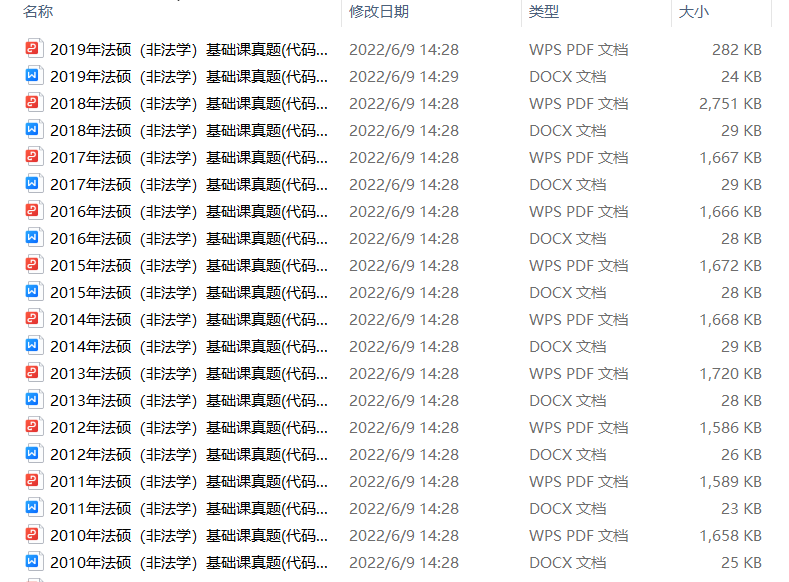
3.24考研复习备考资料大合集

3.24考研复习备考资料:考研大纲

3.24考研复习备考资料:政数英备考资料+自命题真题
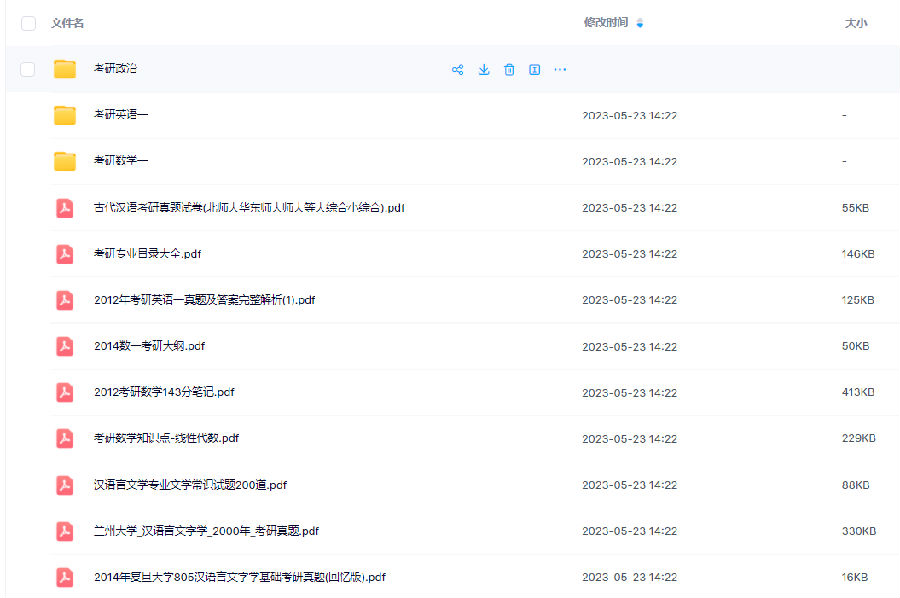
------------------
考研备考过程中,尤其是专业课部分,参考往年的考试真题,对于我们的复习有更好的帮助。北京大学考研真题资料都有哪些?小编为大家进行了汇总。
北京大学考研真题资料-公共课
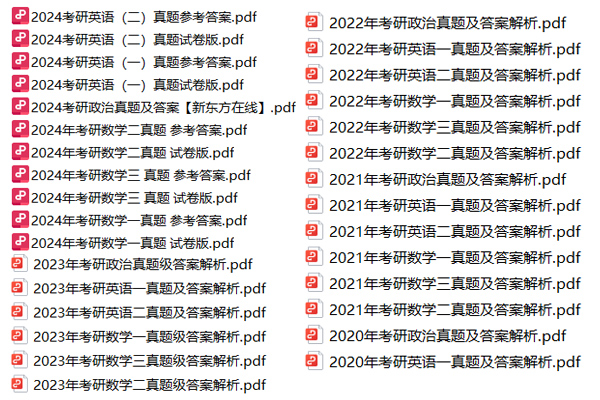
北京大学考研真题资料-专业课


以上就是关于“北京大学考研真题资料下载(历年汇总)”的整理,更多考研资料下载,请关注微信获取下载地址。
2024考研公共课必背知识点汇总
发布时间:2023-01-03扫码添加【考研班主任】
即可领取资料包
2013-2023考研历年真题汇总
发布时间:2023-01-03扫码添加【考研班主任】
即可领取资料包
考研英语大纲词汇(PDF可打印)
发布时间:2023-01-03扫码添加【考研班主任】
即可领取资料包
2024考研专业课知识点总结
发布时间:2023-01-03扫码添加【考研班主任】
即可领取资料包
2023考研政治 内部押题 PDF
发布时间:2022-11-16扫码添加【考研班主任】
即可领取资料包
徐涛:23考研预测六套卷
发布时间:2022-11-16扫码添加【考研班主任】
即可领取资料包
考研政数英冲刺资料最新整理
发布时间:2022-11-16扫码添加【考研班主任】
即可领取资料包
23考研答题卡模板打印版
发布时间:2022-11-16扫码添加【考研班主任】
即可领取资料包
2023考研大纲词汇5500PDF电子版
发布时间:2022-07-28扫码添加【考研班主任】
即可领取资料包
考研历年真题(公共课+专业课)
发布时间:2022-07-28扫码添加【考研班主任】
即可领取资料包
考研英语阅读100篇附解析及答案
发布时间:2022-01-07扫码添加【考研班主任】
即可领取资料包
新东方考研学霸笔记整理(打印版)
发布时间:2022-01-07扫码添加【考研班主任】
即可领取资料包
2001-2021年考研英语真题答案(可打印版)
发布时间:2022-01-07扫码添加【考研班主任】
即可领取资料包
考研英语词汇5500(完整版下载)
发布时间:2022-01-07扫码添加【考研班主任】
即可领取资料包
2022考研政审表模板精选10套
发布时间:2022-01-07扫码添加【考研班主任】
即可领取资料包
历年考研真题及答案 下载
发布时间:2021-12-09扫码添加【考研班主任】
即可领取资料包
考研政审表模板汇总
发布时间:2020-06-17扫码添加【考研班主任】
即可领取资料包
近5年考研英语真题汇总
发布时间:2020-06-17扫码添加【考研班主任】
即可领取资料包
考研英语大纲词汇5500
发布时间:2020-06-17扫码添加【考研班主任】
即可领取资料包
2022考研12大学科专业排名汇总
发布时间:2019-11-21扫码添加【考研班主任】
即可领取资料包
2023考研政治复习备考资料【珍藏版】
发布时间:2019-11-21扫码添加【考研班主任】
即可领取资料包
考研英语万能模板+必备词汇+范文
发布时间:2019-11-21扫码添加【考研班主任】
即可领取资料包
考研数学一、二、三历年真题整理
发布时间:2019-11-21扫码添加【考研班主任】
即可领取资料包

添加班主任领资料
添加考研班主任
免费领取考研历年真题等复习干货资料
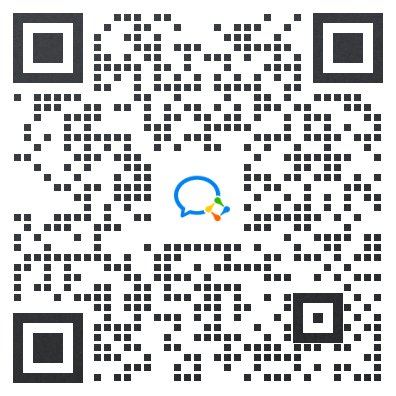
 推荐阅读
推荐阅读
亲爱的26届考研同学们,对于备战考研英语二的考生来说,掌握有效的复习方法和高质量的备考资料至关重要。2025年考研英语二真题解析作为
来源 : 2025-03-20 08:37:00 关键字 : 考研英语二真题
亲爱的26届考研同学们,对于英语专业的考研生来说,英语专业考研一直是备考重点。通过有效的复习和高质量的学习资料才能确保成功。2025
来源 : 2025-03-19 08:34:00 关键字 : 英语专业考研真题
亲爱的26届考研同学们,考研英语一直是我们备考中的重要一环,高效的备考策略和优秀的学习资料是取得成功的关键。如今,学习资源的电子
来源 : 2025-03-18 08:32:00 关键字 : 英语考研真题电子版
亲爱的26届考研同学们,备战考研需要扎实的英语基础,尤其是翻译部分的备考更是对综合能力的一大挑战。2025年考研英语翻译真题作为最近
来源 : 2025-03-31 08:32:00 关键字 : 考研英语翻译真题
亲爱的26届考研同学们,考研英语作文作为英语考试中的重要组成部分,一直以来都是众多考生感到头疼的部分。如何精准地抓住考点,高效备
来源 : 网络 2025-03-31 08:29:00 关键字 : 2025年考研英语作文真题

 资料下载
资料下载
扫码添加【考研班主任】
即可领取资料包
扫码添加【考研班主任】
即可领取资料包
扫码添加【考研班主任】
即可领取资料包
扫码添加【考研班主任】
即可领取资料包
扫码添加【考研班主任】
即可领取资料包
扫码添加【考研班主任】
即可领取资料包
新东方在线考研资料合集
下载方式:微信扫码,获取网盘链接

目录:
1.2013-2023年近10年政数英真题及解析PDF版(新东方)
2.2013-2023年专业课考试历年真题及解析PDF版
3.24考研复习备考资料大合集:大纲+备考资料+词汇书+考前押题+自命题
资料介绍:
1.2013-2023年近10年政数英真题及解析PDF版(新东方)
 、
、
2.2013-2023年专业课考试历年真题及解析PDF版


3.24考研复习备考资料大合集

3.24考研复习备考资料:考研大纲

3.24考研复习备考资料:政数英备考资料+自命题真题

------------------
考研备考过程中,尤其是专业课部分,参考往年的考试真题,对于我们的复习有更好的帮助。北京大学考研真题资料都有哪些?小编为大家进行了汇总。
北京大学考研真题资料-公共课

北京大学考研真题资料-专业课


以上就是关于“北京大学考研真题资料下载(历年汇总)”的整理,更多考研资料下载,请关注微信获取下载地址。
扫码添加【考研班主任】
即可领取资料包
扫码添加【考研班主任】
即可领取资料包
扫码添加【考研班主任】
即可领取资料包
扫码添加【考研班主任】
即可领取资料包
扫码添加【考研班主任】
即可领取资料包
扫码添加【考研班主任】
即可领取资料包
扫码添加【考研班主任】
即可领取资料包
扫码添加【考研班主任】
即可领取资料包
扫码添加【考研班主任】
即可领取资料包
扫码添加【考研班主任】
即可领取资料包
扫码添加【考研班主任】
即可领取资料包
扫码添加【考研班主任】
即可领取资料包
扫码添加【考研班主任】
即可领取资料包
扫码添加【考研班主任】
即可领取资料包
扫码添加【考研班主任】
即可领取资料包
扫码添加【考研班主任】
即可领取资料包
扫码添加【考研班主任】
即可领取资料包
扫码添加【考研班主任】
即可领取资料包
扫码添加【考研班主任】
即可领取资料包
扫码添加【考研班主任】
即可领取资料包
扫码添加【考研班主任】
即可领取资料包
扫码添加【考研班主任】
即可领取资料包
扫码添加【考研班主任】
即可领取资料包

 阅读排行榜
阅读排行榜
 相关内容
相关内容